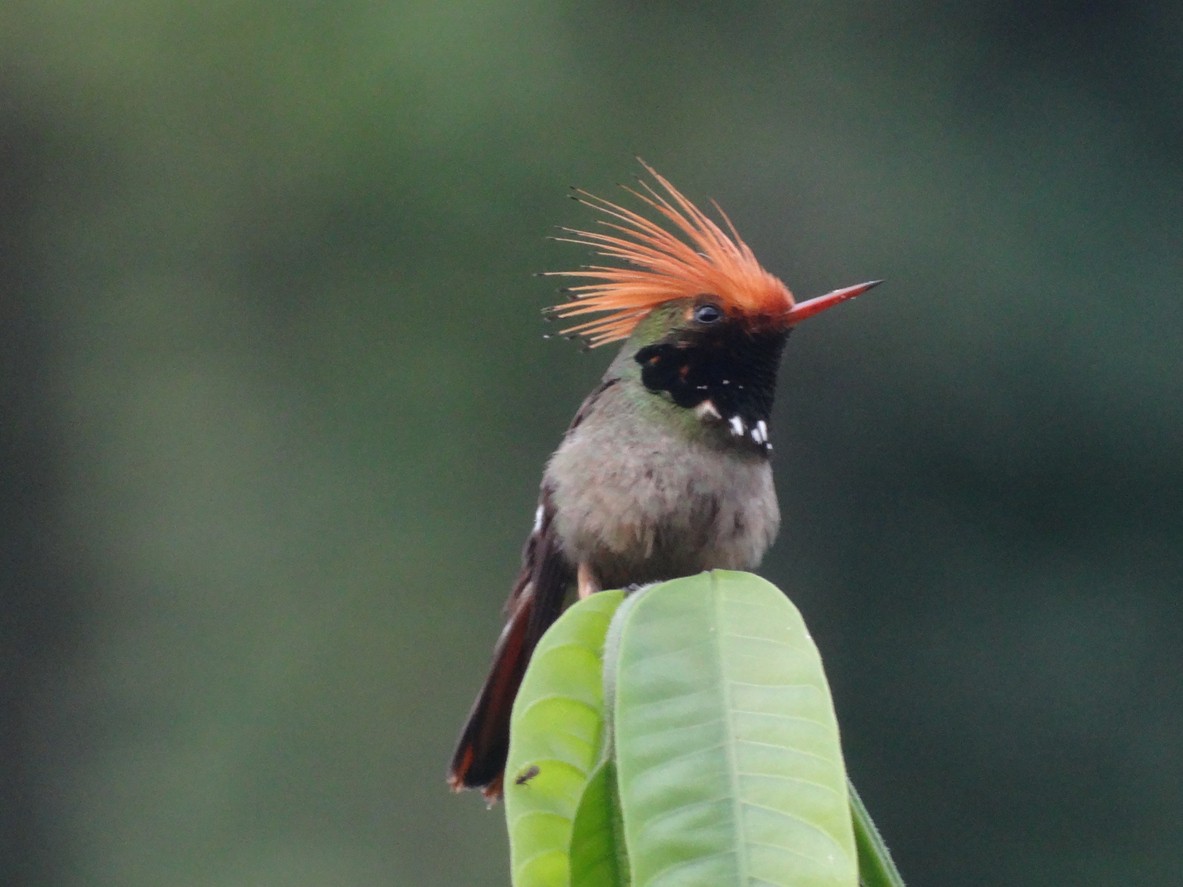Rufous-crested Coquette
A species of Coquettes Scientific name : Lophornis delattrei Genus : Coquettes
Rufous-crested Coquette, A species of Coquettes
Botanical name: Lophornis delattrei
Genus: Coquettes
Content
Description General Info

Description
Rufous-Crested Coquettes are of 6.4 cm to 7.0 cm in length, have a wingspan of 4.0 cm to 4.5 cm, and have weigh an average of 2.8g. This species has a short orange bill that ends in a sharp blackened point. Its back and stomach is a light iridescent green. A band of white feathers crosses the rump, and brown, orange, and green tail feathers extend posteriorly from it. The adult male has a crest of slender and rigid black tipped rufous feathers, that extend dorsally from its rufous coloured head feathers. It has a throat of darker iridescent green feathers which ends posteriorly in small pointed white feathers. A vertical band of rufous feathers frames the green throat and tail feathers of the males, and the tail ends in a double-rounded shape. Female rufous-crested coquettes share a similar physiology to the males, with a few key defining differences. Females display no head crests, and instead their rufous coloured forehead feathers fade into the iridescent green ones which extend down their backs. Their throats are not uniformly green, but instead are primarily white with small clusters of green feathers. A band of rufous feathers extends fully from the side of the throat up to the forehead. The tail of the female rufous-crested coquette is singly rounded, and the tail feathers, while primarily green, end in small patches of light orange. 
Size
7 cm
Nest Placement
Tree
Feeding Habits
Rufous-crested Coquette primarily feeds on nectar, showcasing a preference for foraging from a variety of flowering plants. It supplements its diet with arthropods, exhibiting agile flight maneuvers to catch these small prey. Unique adaptations include a specialized tongue for nectar extraction.
Habitat
Rufous-crested Coquette predominantly inhabits the edges of humid forests and can frequently be found in forest clearings, along roadsides, and in semi-open areas that are dotted with shrubs. These birds thrive in a range of altitudes from 600 to 2000 meters, favoring to forage at the lower strata of vegetation. Their habitat generally spans across neotropical regions with a preference for moist and intermediate elevations, rather than the dense interior of forests or completely open landscapes.
Dite type
Nectivorous
General Info
Feeding Habits
Bird food type
Distribution Area
The species inhabits the Pacific and Caribbean mountainsides of Peru, Bolivia, Colombia, Ecuador, Panama, and Costa Rica; and at least one observation of the species has been reported in western Brazil. The species is primarily found in altitudes of 500m 1,900m above sea level, likely inhabiting higher altitudes when breeding and lower when not. Rufous-crested Croquettes favour humid forests with evergreen or semi-deciduous compositions, and travel large distances within these ecosystems in search of suitable foods. In a homing experiment with frilled coquettes, this genetically similar species was seen to navigate ranges of up to 15 km. 
Species Status
The rufous-crested coquette is rare yet its populations appear stable, and the IUCN red list ranks this species as one of lest concern. While habitat loss due to deforestation is a major problem for bird species in South America, since the rufous-crested coquette feeds in open areas and forest clearings it is affected to a lesser degree. 


Scientific Classification
Phylum
Chordates Class
Birds Order
Swifts and hummingbirds Family
Hummingbirds Genus
Coquettes Species
Rufous-crested Coquette